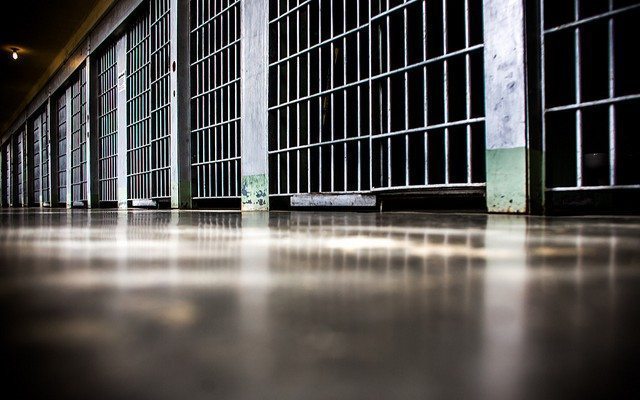 "Prison Bound" courtesy of [Thomas Hawk Via Flickr]
"Prison Bound" courtesy of [Thomas Hawk Via Flickr]
Crime
The Punishment Rate: A New Way to Look at the U.S. Prison System
Most people know that the prison population in the United States has grown dramatically over the past several decades. While it’s true that the number of people in U.S. prisons has grown significantly, we don’t have a concrete understanding of how that growth compares to changes in crime rates–are more people sent to prison because there was more crime or did we start punishing crime more? The Pew Charitable Trusts attempts to fill that gap with its punishment rate calculation, which provides some interesting details about how punishment varies over time and between states.
According to the Public Safety Performance Project at the Pew Charitable Trusts, the imprisonment rate increased by 149 percent between 1983 and 2013 while the punishment rate increased by 165 percent for the United States as a whole. In its research, Pew noticed that all states became more punitive from 1983 to 2013, but the changes varied widely among states.
With its new punishment rate measurement, Pew sought to look at the prison population relative to both the frequency and severity of crime in each state. Doing so helps provide a better understanding of how the incarceration rate changed relative to the prevalence of serious crime. Looking at imprisonment rates in the context of crime rates also helps illustrate differences in how states punish crime and whether certain states are more punitive than others.
Based on the report’s findings, Mississippi’s punishment rate of 818 in 2013 was the highest among all of the states and significantly greater than the national average, which was 477 that year. On the other side of the spectrum is Maine, which had a punishment rate of just 231. In the 30-year period that the researchers analyzed, Colorado experienced the largest increase in its punishment rate, going up 417 percent between 1983 and 2013.
For a full breakdown of the report’s findings and a look at each state’s ranking, you can read more here.
The researchers looked at instances of violent crime using data from the FBI’s uniform crime reporting program for all seven Part I offenses–murder, rape, robbery, aggravated assault, burglary, larceny-theft, and motor vehicle theft. They then weighed each crime according to its severity, which was determined by the average length of a prison sentence for each crime.
In the end, the authors were able to determine which states were the most punitive based on how many people they imprisoned in relation to the frequency and severity of crime. A state with a relatively low rate of serious crime but a high prison population would have a high punishment rate, indicating that it is more punitive than other states.
While the Pew Charitable Trusts report provides some much-needed context to discussions of the U.S. prison system, it’s important to note that the measure is still far from perfect. In his thoughtful critique of Pew’s research, Tom Meagher at the Marshall Project notes that the punishment rate metric uses the best available information, but its limitations highlight the inherent challenges in measuring the criminal justice system.
Arguably the most significant gap in the measurement is the difficulty that the model has taking drug offenses into account. Drug crimes have been one of the largest contributors to the growth in the prison population, but because they are not tracked by the FBI’s uniform crime reporting system the weighting model cannot take them into account.
In the brief on the punishment rate, the researchers address the issue of drug crime and other offenses not tracked by the FBI, noting:
Although the imprisonment rate counts drug offenders—who make up nearly a fifth of the state prison population—drug crimes are not counted among the FBI’s Part I offenses, so the severity-weighted crime rate does not include them.
Pew acknowledges these drawbacks but argues that the punishment rate can still provide important context when looking at the criminal justice system. While there are imperfections in the data and limitations in terms of what the measurement can tell us, looking at punishment rates and how they vary across states can help understand the way in which prisons are utilized in the criminal justice system.
The report also doesn’t get into why exactly both incarceration and punishment rates increased over the 30-year period, but it does point to existing research that explains, at least in part, the trend. The authors note that changes in policies, rather than crime rates, largely explain the imprisonment growth. Ultimately they conclude, “States that imprison a large share of their residents, for example, can have a high crime rate or a low one; the same is true for states that lock up a small proportion of their populations.” While the report may not tell people which policies are responsible for potentially unnecessary levels of punishment, it may prompt states to start looking at the effects of their criminal justice decisions.








Comments